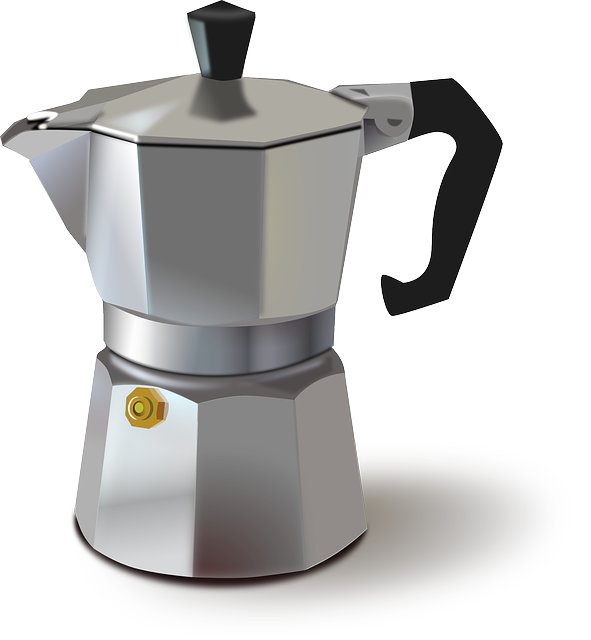مكوك فضاء
|
مكوك الفضاء ديسكڤري ينطلق في المهمة STS-120. | |
| الوظيفة | نظام إطلاق ومعاودة دخول قابل لإعادة الاستخدام جزئياً مأهول |
|---|---|
| الصانع |
United Space Alliance: ثيوكول/بوينگ (SRBs) لوكهيد مارتين (مارتين مارييتا) - (ET) روكويل العالمية (مدارية) |
| بلد المنشأ | الولايات المتحدة الأمريكية |
| الحجم | |
| الارتفاع | 56.1 م (184 ق) |
| القطر | 8.7 م (28.5 ft) |
| الكتلة | 2,029,203 كگ (4,474,574 رطل) |
| المراحل | 2 |
| السعة | |
| الحمولة إلى LEO | 24,400 kg (53,700 lb) |
| حمولة إلى مدار تحويل ثابت أرضياً |
3,810 kg (8,390 lb) |
| تاريخ الإطلاق | |
| الحالة | Active |
| مواقع الإطلاق |
LC-39, مركز كيندي للفضاء SLC-6, قاعدة ڤاندنبرگ للقوات الجوية (غير مستعملة) |
| إجمالي مرات الإطلاق | 121 |
| النجاحات | 119 |
| الفشل | 2 |
| أول رحلة | 12 أبريل 1981 |
| حمولات جديرة بالذكر |
مكونات المحطة الفضائية الدولية تلسكوب الفضاء هبل گاليليو ماجلان Chandra X-ray Observatory Compton Gamma Ray Observatory |
| المعززات (Stage 0) - Solid Rocket Boosters | |
| المعززات No | 2 |
| المحركات | 1 صلب |
| الحمل | 2,800,000 each، إطلاق من مستوى البحر (12.5 MN) |
| قوة الدفع النوعية | 269 s |
| وقت الحرق | 124 s |
| الوقود | solid |
| الفترة الأولى - الخزان الخارجي | |
| المحركات | (none) (3 م.ر.م.ف. موضوعون على المركبة المدارية) |
| الحمل | 1,180,000 رطلق المجموع الإجمالي، إطلاق من سطح البحر (5.25 MN) |
| قوة الدفع النوعية | 455 s |
| وقت الحرق | 480 s |
| الوقود | LOX/LH2 |
| الفترة الثانية - Orbiter | |
| المحركات | 2 OME |
| الحمل | 12,000 lbf combined total vacuum thrust (53 kN) |
| قوة الدفع النوعية | 316 s |
| وقت الحرق | 1250 s |
| الوقود | MMH/ |
مكوك فضاء Space Shuttle ناسا, ويـُعهد رسمياً باسم نظام نقل فضائي Space Transportation System (STS), هومركبة فضائية تستخدمها حالياً حكومة الولايات المتحدة لمهمات الطيران البشري في الفضاء. عند الإطلاق, يتكون من الخزان الخارجي بلون الصدأ (ET), اثنين من الروافع الصاروخية الصلبة (SRBs) البيضاء الرفيعة , والمدارية وطائرة فضائية مجنحة هي مكوك الفضاء بالمعني الضيق.
وتحمل المدارية رواد الفضاء والحمولة مثل السواتل أوأجزاء المحطة الفضائية إلى low earth orbit, إلى الغلاف الجوي العلوي للأرض أوالثرموسفير. وعادة, طاقم مكون من خمس إلى سبعة أعضاء يركبون المدارية. الحد الأقصى للحمولة هو50,000 رطل (22,700 كگ). وعند إتمام مهمة المدارية فإنها تشعل دوافع نظام المناورة المداري (OMS)لتسقط من المدار وتعاود الدخول الغلاف الجوي السفلي. During the descent and landing, the shuttle orbiter acts as a glider, and makes a completely unpowered ("dead stick") landing.
المكوك هوأول مركبة فضائية مدارية مصممة من أجل for partial reusability. It carries payloads to low Earth orbit, provides crew rotation for the International Space Station (ISS), and performs servicing missions. The orbiter can also recover satellites and other payloads from orbit and return them to Earth, but this capacity has not been used often. However, it has been used to return large payloads from the ISS to Earth, as the Russian Soyuz spacecraft has limited capacity for return payloads. Each Shuttle was designed for a projected lifespan of 100 launches orعشرة years' operational life. The man responsible for the design of the STS was Maxime Faget, who had also overseen the Mercury, Gemini and Apollo spacecraft designs. The crucial factor in the size and shape of the Shuttle Orbiter was the requirement that it be able to accommodate the largest planned spy satellites, and have the cross-range recovery range to meet classified USAF missions requirement for a one-around abort for a polar launch. Factors involved in opting for 'reusable' solid rockets and an expendable fuel tank included the desire of the Pentagon to obtain a high-capacity payload vehicle for satellite deployment, and the desire of the Nixon administration to reduce the costs of space exploration by developing a spacecraft with reusable components.
ستة مكوكات تم بناؤهم; المدارية الأولى, , was not built for actual space flight, and was used only for testing purposes. Five space-worthy orbiters were built: , , , , and . Challenger disintegrated 73 seconds after launch in 1986, and Endeavour was built as a replacement. Columbia broke apart during re-entry in 2003.
First launched in 1981, NASA has announced that the Space Shuttle would be retired in 2010, and from 2014 on, would be replaced by Orion, a new vehicle that is designed to take humans to the Moon and beyond along with its partner rockets, the Ares I and Ares V Rockets; however, since Orion is meant primarily for manned space flights, ESA's Automated Transfer Vehicle, with its 7,667 kg payload, has been suggested as an alternative for tasks like supplying space stations.
Each Space Shuttle is a partially reusable launch system that is composed of three main assemblies: the reusable Orbiter Vehicle (OV), the expendable external tank (ET), and the two partially-reusable solid rocket boosters (SRBs). The tank and boosters are jettisoned during ascent; only the orbiter goes into orbit. The vehicle is launched vertically like a conventional rocket, and the orbiter glides to a horizontal landing, after which it is refurbished for reuse.
أحياناً, يشار إلى المركبة المدارية نفسها على أنها مكوك الفضاء. فنياً, فهذا خطأ في التسمية, إذ حتى "نظام النقل الفضائي" (مكوك الفضاء) الواقعي هومجموع المدارية والخزان الخارجي (ET) واثنين من الروافع الصاروخية الصلبة القابلة لإعادة الاستعمال جزئياً. معاً, جميع هؤلاء يشار إليهم باسم "المدخنة Stack".
المركبة المدارية
وتشبه المركبة المدارية طائرة ذات أجنخة دلتا مزدوجة, swept 81° at the inner leading edge, and 45° at the outer leading edge. Its vertical stabilizer's leading edge is swept back at a 50° angle. The four elevons, mounted at the trailing edge of the wings, and the rudder/speed brake, attached at the trailing edge of the stabilizer, with the body flap, control the orbiter during descent and landing. The orbiter has a large payload bay measuring 15 قدم (4.6 م) by 60 قدم (18.3 م) comprising most of the fuselage.
ثلاثة محركات رئيسية لمكوك الفضاء (SSMEs) يـُرَكـَّـبوا على مؤخرة جسم المدارية في نسق مثلثي. وبإمكان المحركات الثلاثة الدوران 10.5 درجة لأعلى ولأسفل, و8.5 درجات من جانب لآخر أثناء الإرتقاء لتغيير اتجاه الدفع وليدير اتجاه المكوك ويدفعه. بنية المركبة المدارية مصنوعة أساساً من سبيكة الألومنيوم, إلا حتى هيكل دافع المحرك مصنوع من التيتانيوم (سبيكة).
الصواريخ الرافعة الصلبة
Two solid rocket boosters (SRBs) each provide 2.8 million lbf (12.5 MN) of thrust at liftoff, which is 83% of the total thrust needed for liftoff. The SRBs are jettisoned two minutes after launch at a height of about 150,000 feet (45.7 km), and then deploy parachutes and land in the ocean to be recovered. The SRB cases are made of steel about ½ inch (13 mm) thick.
أنظمة الطيران
Early shuttle missions took along the GRiD Compass, arguably one of the first laptop computers. The Compass sold poorly, as it cost at least $8000 (USD), but offered unmatched performance for its weight and size. NASA was one of its main customers.
The shuttle was one of the earliest craft to use a computerized fly-by-wire digital flight control system. This means no mechanical or hydraulic linkages connect the pilot's control stick to the control surfaces or reaction control system thrusters.
A primary concern with digital fly-by-wire systems is reliability. Much research went into the shuttle computer system. The shuttle uses five identical redundant IBM 32-bit general purpose computers (GPCs), model AP-101, constituting a type of embedded system. Four computers run specialized software called the Primary Avionics Software System (PASS). A fifth backup computer runs separate software called the Backup Flight System (BFS). Collectively they are called the Data Processing System (DPS).
The design goal of the shuttle's DPS is fail operational/fail safe reliability. After a single failure, the shuttle can still continue the mission. After two failures, it can still land safely.
The four general-purpose computers operate essentially in lockstep, checking each other. If one computer fails, the three functioning computers "vote" it out of the system. This isolates it from vehicle control. If a second computer of the three remaining fails, the two functioning computers vote it out. In the rare case of two out of four computers simultaneously failing (a two-two split), one group is picked at random.
The Backup Flight System (BFS) is separately developed software running on the fifth computer, used only if the entire four-computer primary system fails. The BFS was created because although the four primary computers are hardware redundant, they all run the same software, so a generic software problem could crash all of them. Embedded system avionic software is developed under totally different conditions from public commercial software, the number of code lines is tiny compared to a public commercial software, changes are only made infrequently and with extensive testing, and many programming and test personnel work on the small amount of computer code. However in theory it can still fail, and the BFS exists for that contingency.
The software for the shuttle computers is written in a high-level language called HAL/S, somewhat similar to PL/I. It is specifically designed for a real time embedded system environment.
The IBM AP-101 computers originally had about 424 kilobytes of magnetic core memory each. The CPU could process about 400,000 instructions per second. They have no hard disk drive, and load software from magnetic tape cartridges.
In 1990, the original computers were replaced with an upgraded model AP-101S, which has about 2.5 times the memory capacity (about 1 megabyte) and three times the processor speed (about 1.2 million instructions per second). The memory was changed from magnetic core to semiconductor with battery backup.
الطبروجرافيا والتصميم الجرافيكي
The typeface used on the Space Shuttle Orbiter is Helvetica. On the front lower corner of the cargo bay doors is the name of the orbiter, on the back lower corner of the cargo bay is the NASA 'Worm' logo. Below the NASA logo is the text 'United States' with a flag of the United States. Another United States flag appears on the right wing.
تطويرات
Internally, the shuttle remains largely similar to the original design, with the exception of the improved avionics computers. In addition to the computer upgrades, the original vector graphics monochrome cockpit displays were replaced with modern full-color, flat-panel display screens, similar to those of contemporary airliners like the Airbus A380 and Boeing 777. This is called a glass cockpit. In the Apollo-Soyuz Test Project tradition, programmable calculators are carried as well (originally the HP-41C). With the coming of the ISS, the orbiter's internal airlocks have been replaced with external docking systems to allow for a greater amount of cargo to be stored on the shuttle's mid-deck during station resupply missions.
The Space Shuttle Main Engines (SSMEs) have had several improvements to enhance reliability and power. This explains phrases such as "Main engines throttling up to 104%." This does not mean the engines are being run over a safe limit. The 100% figure is the original specified power level. During the lengthy development program, Rocketdyne determined the engine was capable of safe reliable operation at 104% of the originally specified thrust. They could have rescaled the output number, saying in essence 104% is now 100%. To clarify this would have required revising much previous documentation and software, so the 104% number was retained. SSME upgrades are denoted as "block numbers", such as block I, block II, and block IIA. The upgrades have improved engine reliability, maintainability and performance. The 109% thrust level was finally reached in flight hardware with the Block II engines in 2001. The normal maximum throttle is 104%, with 106% and 109% available for abort emergencies.
For the first two missions, STS-1 and STS-2, the external tank was painted white to protect the insulation that covers much of the tank, but improvements and testing showed that it was not required. The weight saved by not painting the tank results in an increase in payload capability to orbit. Additional weight was saved by removing some of the internal "stringers" in the hydrogen tank that proved unnecessary. The resulting "light-weight external tank" has been used on the vast majority of shuttle missions. STS-91 saw the first flight of the "super light-weight external tank". This version of the tank is made of the 2195 aluminum-lithium alloy. It weighs 7,500 lb (3.4 t) less than the last run of lightweight tanks. As the shuttle cannot fly unmanned, each of these improvements has been "tested" on operational flights.
The SRBs (Solid Rocket Boosters) have undergone improvements as well. Design engineers added a third O-ring seal to the joints between the segments after the disaster.
Several other SRB improvements were planned in order to improve performance and safety, but never came to be. These culminated in the considerably simpler, lower cost, probably safer and better performing Advanced Solid Rocket Booster. These rockets entered production in the early to mid-1990s to support the Space Station, but were later canceled to save money after the expenditure of $2.2 billion. The loss of the ASRB program resulted in the development of the Super LightWeight external Tank (SLWT), which provides some of the increased payload capability, while not providing any of the safety improvements. In addition, the Air Force developed their own much lighter single-piece SRB design using a filament-wound system, but this too was cancelled.
STS-70 was delayed in 1995, when woodpeckers bored holes in the foam insulation of Discovery's external tank. Since then, NASA has installed commercial plastic owl decoys and inflatable owl balloons which must be removed prior to launch. The delicate nature of the foam insulation has been the cause of damage to the Thermal Protection System, the tile heat shield and heat wrap of the orbiter, during recent launches. NASA remains confident that this damage, while linked to the disaster on 1 فبراير, 2003, will not jeopardize the objective of NASA to complete the International Space Station (ISS) in the projected time allotted.
A cargo-only, unmanned variant of the shuttle has been variously proposed, and rejected since the 1980s. It was called the Shuttle-C, and would have traded re-usability for cargo capability, with large potential savings from reusing technology developed for the space shuttle.
On the first four shuttle missions, astronauts wore modified U.S. Air Force high-altitude full-pressure suits, which included a full-pressure helmet during ascent and descent. From the fifth flight, STS-5, until the loss of , one-piece light blue nomex flight suits and partial-pressure helmets were worn. A less-bulky, partial-pressure version of the high-altitude pressure suits with a helmet was reinstated when shuttle flights resumed in 1988. The LES ended its service life in late 1995, and was replaced by the full-pressure Advanced Crew Escape Suit (ACES), which resembles the Gemini space suit worn in the mid-1960s.
To extend the duration that orbiters can stay docked at the ISS, the Station-to-Shuttle Power Transfer System (SSPTS) was installed. The SSPTS allows these orbiters to use power provided by the ISS to preserve their consumables. The SSPTS was first used successfully on STS-118.
بيانات فنية
Orbiter specifications (for Endeavour, OV-105)
- الطول: 122.17 قدم (37.24 م)
- طول الجناح: 78.06 قدم (23.79 م)
- الارتفاع: 58.58 قدم (17.86 م)
- الوزن فارغة: 151,205 lb (68,585 kg)
- إجمالي الوزن عند الاقلاع: 240,000 lb (109,000 كج)
- أقصى وزن عند الهبوط: 230,000 lb (104,000 كج)
- محركات رئيسية: Three Rocketdyne Block IIA SSMEs, each with a sea level thrust of 393,800 pounds-force (lbf) (178,600 كج-قوة (كج ق) / 1.75 ميجاطن(م. ط.))
- Maximum payload: 55٬250 pounds (25٬061 kg)
- Payload bay dimensions: 15 قدم (5 م) by 60 قدم (18 م)
- Operational altitude: 100 to 520 ميل بحري (185 to 960 كم)
- السرعة: 25,404 ق/ث (7,743 م/ث, 27,875 كم/س, 17,321 ميل/س)
- Crossrange: 1,085 nmi (2,009 km)
- Crew: Varies. The earliest shuttle flights had the minimum crew of two; many later missions a crew of five. Today, typically seven people fly (commander, pilot, several mission specialists, and rarely a flight engineer). On two occasions, eight astronauts have flown (STS-61-A, STS-71). Eleven people could be accommodated in an emergency mission (see STS-3xx).
External tank specifications (for SLWT)
- الطول: 153.8 قدم (46.9 م)
- القطر: 27.6 ft (8.4 m)
- حجم الدفع: 535,000 جالون أمريكي (2,025 م3)
- الوزن فارغة: 58٬500 lb (26٬535 kg)
- إجمالي وزن الاقلاع: 1,667,000 lb (756,000 kg)
Solid Rocket Booster Specifications
- Length: 149.6 قدم (45.6 م)
- Diameter: 12.17 قدم (3.71 م)
- الوزن فارغة(per booster): 139٬490 lb (63٬272 kg)
- إجمالي وزن الاقلاع (per booster): 1.3 million lb (590,000 كج)
- Thrust (sea level, liftoff): 2.8 million lbf (12.5 MN)
System Stack Specifications
- الإرتفاع: 184.2 قدم (56.1 م)
- إجمالي وزن الاقلاع: 4.5 million lb (2,040,000 kg)
- Total Liftoff Thrust: 6.781 million lbf (30.16 MN)
الإطلاق
All Space Shuttle missions are launched from Kennedy Space Center (KSC). The shuttle will not be launched under conditions where it could be struck by lightning. Aircraft are often struck by lightning with no adverse effects because the electricity of the strike is dissipated through its conductive structure and the aircraft is not electrically grounded. Like most jet airliners, the shuttle is mainly constructed of conductive aluminum, which would normally shield and protect the internal systems. However, upon takeoff the shuttle sends out a long exhaust plume as it ascends, and this plume can trigger lightning by providing a current path to ground. While the shuttle might safely endure a lightning strike, a similar strike caused problems on Apollo 12, so for safety NASA chooses not to launch the shuttle if lightning is possible (NPR8715.5).
The Shuttle has not been launched if its flight will take it from one year to the next (December to January), a year-end rollover (YERO). Its flight software, designed in the 1970s, was not designed for this, and would require the orbiter's computers be reset through a change of year, which could cause a glitch while in orbit. In 2007, NASA engineers devised a solution to this, allowing Shuttle flights to cross the year-end boundary.
On the day of a launch, after the final hold in the countdown at T minusتسعة minutes, the Shuttle goes through its final preparations for launch, and the countdown is automatically controlled by a special computer program at the Launch Control Center. This is known as the Ground Launch Sequencer (GLS), which stops the count if it senses a critical problem with any of the Shuttle's on-board systems. The GLS hands off the count to the Shuttle's on-board computers at T minus 31 seconds.
At T minus 16 seconds, the massive sound suppression system (SPS) begins to drench the Mobile Launcher Platform (MLP) and SRB trenches with 300,000 U.S. gallons (1,100 m³) of water to protect the Orbiter from damage by acoustical energy and rocket exhaust reflected from the flame trench and MLP during liftoff.
At T-minusعشرة seconds, hydrogen igniters are activated under each engine bell to quell the stagnant gas inside the cones before ignition. Failure to burn these gases can trip the onboard sensors and create the possibility of an overpressure and explosion of the vehicle during the firing phase. The main engine turbopumps are also commanded to begin charging the combustion chambers with liquid hydrogen and liquid oxygen at this time. The computers reciprocate this action by allowing the redundant computer systems to begin the firing phase.
The three Space Shuttle Main Engines (SSMEs) start at T minus 6.6 seconds. The main engines ignite sequentially via the shuttle's general purpose computers (GPCs) at 120 millisecond intervals. The GPCs require that the engines reach 90% of their rated performance to complete the final gimbal of the main engine nozzles to liftoff configuration. When the SSMEs start, the water from the sound suppression system flashes into a large volume of steam that shoots southward. All three SSMEs must reach the required 100% thrust within three seconds to initiate the SRB firing command. If the onboard computers verify normal thrust buildup, at T minus 0 seconds, the SRBs are ignited. At this point the vehicle is committed to takeoff, as the SRBs cannot be turned off once ignited. After the SRBs reach a stable thrust ratio, pyrotechnic nuts are detonated by radio controlled signals from the shuttle's GPC's to release the vehicle . The plume from the solid rockets exits the flame trench in a northward direction at near the speed of sound, often causing a rippling of shockwaves along the actual flame and smoke contrails. At ignition, the GPC's mandate the firing sequences via the Master Events Controller, a computer program integrated with the shuttle's four redundant computer systems. There are extensive emergency procedures (abort modes) to handle various failure scenarios during ascent. Many of these concern SSME failures, since that is the most complex and highly stressed component. After the Challenger disaster, there were extensive upgrades to the abort modes.
After the main engines start, but while the solid rocket boosters are still clamped to the pad, the offset thrust from the Shuttle's three main engines causes the entire launch stack (boosters, tank and shuttle) to pitch down about 2 m at cockpit level. This motion is called the "nod", or "twang" in NASA jargon. As the boosters flex back into their original shape, the launch stack pitches slowly back upright. This takes approximately six seconds. At the point when it is perfectly vertical, the boosters ignite and the launch commences.
Shortly after clearing the tower the Shuttle begins a roll and pitch program to set its orbital inclination and so that the vehicle is below the external tank and SRBs, with wings level. The vehicle climbs in a progressively flattening arc, accelerating as the weight of the SRBs and main tank decrease. To achieve low orbit requires much more horizontal than vertical acceleration. This is not visually obvious, since the vehicle rises vertically and is out of sight for most of the horizontal acceleration. The near circular orbital velocity at the 380 km (236 statute miles) altitude of the International Space Station is 7.68 kilometers per second (27,650 km/h, 17,180 mph), roughly equivalent to Mach 23 at sea level. For missions to the International Space Station, the shuttle must reach an azimuth of 51.6 degrees inclination to rendezvous with the station.
Around a point called Max Q, where the aerodynamic forces are at their maximum, the main engines are temporarily throttled back to avoid overspeeding and hence overstressing the Shuttle, particularly in vulnerable areas such as the wings. At this point, a phenomenon known as the Prandtl-Glauert singularity occurs, where condensation clouds form during the vehicle's transition to supersonic speed.
126 seconds after launch, explosive bolts release the SRBs and small separation rockets push them laterally away from the vehicle. The SRBs parachute back to the ocean to be reused. The Shuttle then begins accelerating to orbit on the Space Shuttle main engines. The vehicle at that point in the flight has a thrust-to-weight ratio of less than one — the main engines actually have insufficient thrust to exceed the force of gravity, and the vertical speed given to it by the SRBs temporarily decreases. However, as the burn continues, the weight of the propellant decreases and the thrust-to-weight ratio exceeds 1 again and the ever-lighter vehicle then continues to accelerate toward orbit.
The vehicle continues to climb and takes on a somewhat nose-up angle to the horizon — it uses the main engines to gain and then maintain altitude while it accelerates horizontally towards orbit. At about five and three-quarter minutes into ascent, the orbiter rolls heads up to switch communication links from ground stations to Tracking and Data Relay Satellites.
Finally, in the last tens of seconds of the main engine burn, the mass of the vehicle is low enough that the engines must be throttled back to limit vehicle acceleration to 3g (30 m/s²), largely for astronaut comfort.
Before complete depletion of propellant, as running dry would destroy the engines, the main engines are shut down. The oxygen supply is terminated before the hydrogen supply, as the SSMEs react unfavorably to other shutdown modes. Liquid oxygen has a tendency to react violently, and supports combustion when it encounters hot engine metal. The external tank is released by firing explosive bolts and falls, largely burning up in the atmosphere, though some fragments fall into the Indian Ocean. The sealing action of the tank plumbing and lack of pressure relief systems on the external tank helps it break up in the lower atmosphere. After the foam burns away during reentry, the heat causes a pressure buildup in the remaining liquid oxygen and hydrogen until the tank explodes. This ensures that any pieces that fall back to Earth are small.
To prevent the shuttle from following the external tank back into the lower atmosphere, the Orbital maneuvering system (OMS) engines are fired to raise the perigee higher into the upper atmosphere. On some missions (e.g., missions to the ISS), the OMS engines are also used while the main engines are still firing. The reason for putting the orbiter on a path that brings it back to Earth is not just for external tank disposal. It is one of safety; if the OMS malfunctions, or the cargo bay doors cannot open for some reason, the shuttle is already on a path to return to earth for an emergency abort landing.
Since it flies in the upper atmosphere, the craft's orbit slowly decays due to air friction. The orbiter must periodically boost its velocity with the OMS to prevent re-entry into the lower atmosphere.
معاودة الدخول والهبوط
Almost the entire space shuttle re-entry, except for lowering the landing gear and deploying the air data probes, is normally performed under computer control. However, the re-entry can be flown entirely manually if an emergency arises. The approach and landing phase can be controlled by the autopilot, but is usually hand flown.
The vehicle begins re-entry by firing the Orbital maneuvering system engines, while flying upside down, backside first, in the opposite direction to orbital motion for approximately three minutes, giving roughly 200 mph (90 m/s) of delta-v. The resultant slowing of the Shuttle lowers its orbital perigee down into the upper atmosphere. The shuttle then flips over, by pulling its nose up (which is actually "down" because it's flying upside down). This OMS firing is done roughly halfway around the globe from the landing site.
The vehicle starts encountering more significant air density in the lower thermosphere at about 400,000 ft (120 km), at around Mach 25 (8.2 km/s). The vehicle is controlled by a combination of RCS thrusters and control surfaces, to fly at a 40 degree nose-up attitude, producing high drag, not only to slow it down to landing speed, but also to reduce reentry heating. In addition, the vehicle needs to bleed off extra speed before reaching the landing site. This is achieved by performing s-curves at up to a 70 degree roll angle.
The orbiter's maximum glide ratio/lift to drag ratio varies considerably with speed, ranging from 1:1 at hypersonic speeds, 2:1 at supersonic speeds and reaching 4.5:1 at subsonic speeds during approach and landing.
In the lower atmosphere, the orbiter flies much like a conventional glider, except for a much higher descent rate, over 10,000 feet per minute (50 m/s).
At approximately Mach 3, two air data probes, located on the left and right sides of the orbiter's forward lower fuselage, are deployed to sense air pressure related to the vehicle's movement in the atmosphere.
When the approach and landing phase begins, the orbiter is at a 10,000 ft (3,000 m) altitude, 7.5 miles (12 km) from the runway. The pilots apply aerodynamic braking to help slow down the vehicle. The orbiter's speed is reduced from 424 mph (682 km/h) to approximately 215 mph (346 km/h), (compared to 160 mph (260 km/h) for a jet airliner), at touch-down. The landing gear is deployed while the Orbiter is flying at 267 mph (430 km/h). To assist the speed brakes, a 40 ft (12 m) drag chute is deployed either after main gear or nose gear touchdown (depending on selected chute deploy mode) at about 213 mph (343 km/h). The chute is jettisoned as the orbiter slows through 69 mph (110 km/h).
After landing, the vehicle stands on the runway for several minutes to permit the fumes from poisonous hydrazine, used as a propellant for attitude control, to dissipate, and for the shuttle fuselage to cool before the astronauts disembark.
مواقع الهبوط
Conditions permitting, the space shuttle will always land at Kennedy Space Center; however, if the conditions make landing there unfavorable, the shuttle can touch down at Edwards Air Force Base in كاليفورنيا or at other sites around the world. A landing at Edwards means that the shuttle must be mated to the Shuttle Carrier Aircraft, and returned to Cape Canaveral, costing NASA an additional 1.7 million dollars. Space Shuttle Columbia (STS-3) also landed once at the White Sands Space Harbor in نيومكسيكو, but this is often a last resort, as NASA scientists believe that the sand could cause damage to the shuttle's exterior.
A list of other landing sites:
- White Sands Space Harbor, New Mexico
- MCAS Yuma/Yuma International Airport, Arizona
- Plattsburgh Air Force Base, New York (Former site; now closed)
- Ben Guerir Air Base, المغرب
- Morón Air Base, اسبانيا
- Banjul International Airport (Yundum), The Gambia
- Zaragoza Air Base, Spain
- Diosdado Macapagal International Airport, The Philippines (When it was still under U.S. Air Force Control)
- Kuala Lumpur International Airport, Malaysia
- RAAF Base Amberley, أستراليا
- Andersen AFB, Guam
- Amilcar Cabral International Airport, الرأس الأخضر
- Hickam AFB, هاواي
- Stockholm-Arlanda Airport, السويد
- Istres AB, فرنسا
- Bangor International Airport, Maine
- Salina Municipal Airport, كانزاس
- Westover Air Reserve Base/Metropolitan Airport, Massachusetts
- Gander International Airport, كندا
A list of launch abort sites:
- RAAF Base Darwin, Darwin Australia
- Myrtle Beach International Airport, South Carolina, USA
- Dyess Air Force Base, Texas, USA
- Marine Corps Air Station Cherry Point, North Carolina, USA
- Ellsworth Air Force Base, South Dakota, USA
- Naval Air Station Oceana, Virginia Beach, Virginia, USA
- Esenboğa International Airport, Ankara, Turkey
- Dover Air Force Base, Delaware, USA
- Fort Wayne International Airport (Air Guard Station), Fort Wayne, Indiana, USA
- International Airport of Gran Canaria-Gando, Gran Canaria (Las Palmas), Canary Islands, Spain
- Otis Air National Guard Base, Massachusetts, USA
- Grant County (Moses Lake), Washington, USA
- Pease ANGB, New Hampshire, USA
- Hao, French Polynesia
- AFB Hoedspruit, South Africa
- Bermuda International Airport (former NAS Bermuda)
- King Khalid International Airport, Riyadh, Saudi Arabia
- Kinshasa, Congo-Kinshasa
- Cologne Bonn Airport, Germany
- Lajes Field, Azores, Portugal
- Lincoln Airport, Nebraska, USA
- Mountain Home Air Force Base, Idaho, USA
- Nassau, Bahamas
- NSA Souda Bay, Crete, Greece
- NSF Diego Garcia, Chagos Archipelago, British Indian Ocean Territory
- Orlando International Airport, Florida
- RAF Fairford, United Kingdom
- Roberts International Airport, Monrovia, Liberia
- Lehigh Valley International Airport, Allentown, PA
- Mataveri International Airport, Hanga Roa, Easter Island, Chile
- Halifax International Airport, Halifax, Nova Scotia, Canada
- Ben Guerir Air Base, Morocco
- Columbus Air Force Base, Mississippi
تاريخ الأسطول
Below is a list of major events in the Space Shuttle orbiter fleet.
| التاريخ | المدارية | الحدث | تعليق |
|---|---|---|---|
| 18 فبراير, 1977 | أول رحلة | Attached to Shuttle Carrier Aircraft throughout flight. | |
| 12 أغطس, 1977 | Enterprise | First free flight | Tailcone on; lakebed landing. |
| 12 اكتوبر, 1977 | Enterprise | Fourth free flight | First with no tailcone; lakebed landing. |
| 26 اكتوبر, 1977 | Enterprise | Final Enterprise free flight | First landing on Edwards AFB concrete runway. |
| 12 ابريل, 1981 | أول رحلة لمكوك الفضاء كولومبيا , أول رحلة تجريبية للمدار | STS-1 | |
| 11 نوفمبر, 1982 | كولومبيا | أول رحلة تطبيقية لمكوك الفضاء, أول مهمة تحمل أربع رواد فضاء | STS-5 |
| April 4, 1983 | أول رحلة للمكوك تشالنجر | STS-6 | |
| 30 اغسطس, 1984 | أول رحلة للمكوك دسكڤري | STS-41-D | |
| 3 اكتوبر, 1985 | أول رحلة للمكوك أتلانتس | STS-51-J | |
| 28 يناير, 1986 | تشالنجر | تفكك بعد 73 ثانية من الإقلاع | لقى جميع أفراد طاقه السبعة حتفهم. |
| 29 سبتمبر, 1988 | دسكڤري | أول وظيفة-مهمة للمكوكتشالنجر | STS-26 |
| 4 مايو, 1989 | أتلانتس | أول مهمة لمكوك الفضاء لاطلاق المسبار الفضائي, ماگلان. | STS-30 |
| 7 مايو, 1992 | أول رحلة للمكوك اندوڤر | STS-49 | |
| 19 نوفمبر, 1996 | كولومبيا | أطول مهمة لمكوك حتى الآن | STS-80 |
| 11 اكتوبر, 2000 | دسكڤري | 100th Space Shuttle mission | STS-92 |
| 1 فبراير, 2003 | كولومبيا | تفكك خلال إعادة الدخول | كل أفراد طاقمه السبعة لقوا حتفهم. |
| July 25, 2005 | Discovery | أول وظيفة-مهمة كولومبيا | STS-114 |
| Planned fleet events | |||
| 2010 | أتلانتس | آخر رحلة مخطط لها للمكوك أتلانتس | STS-131 |
| 2010 | دسكڤري | آخر رحلة مخطط لها للمكوك دسكڤري | STS-132 |
| 2010 | اندوڤر | آخر رحلة مخطط لها للمكوك اندوڤر ; آخر رحلة برنامج مكوك فضاء | STS-133 |
انظر أيضاً
- Comparison of heavy lift launch systems
- برنامج مكوك فضاء
- نقد برنامج مكوك الفضاء
- GRiD Compass the early laptop carried aboard the shuttle.
- Human spaceflight
- List of human spaceflights
- NASA Space Shuttle decision
- Orbiter Processing Facility
- Shuttle Derived Launch Vehicle
- Shuttle SERV
- كارثة فضاء
- استكشاف الفضاء
- Space Shuttle abort modes
- طاقم مكوك الفضاء
- طائر تدريب مكوك
روايات وألعاب
- مكوك الفضاء في الخيال
- Orbiter, a freeware simulator that allows users to fly various spacecraft including the shuttle.
- مكوك فضاء أمريكا
- X-Plane, a flight simulator that allows players to fly the Space Shuttle's re-entry phase.
فيزياء
- Atmospheric reentry
- Lifting body
- Reusable launch system
- Single-stage-to-orbit
مركبات فضائية مشابهة
- Dyna-soar
- EADS Phoenix
- Hermes
- HOPE-X
- Kliper
- مكوك فضاء عسكري
- Orion (Project Constellation)
- Soviet space shuttle Buran
- Lockheed Martin X-33
- DIRECT, a shuttle-derived vehicle proposed as an alternative for Project Constellation
المصادر
- ^ NASA (1995). "Earth's Atmosphere" (in English). ناسا. Unknown parameter
|accessyear=ignored (|access-date=suggested) (help); Unknown parameter|accessmonthday=ignored (help)CS1 maint: unrecognized language (link) - ^ "NASA Space Shuttle Columbia Launch".
- ^ NASA. "Report of the Presidential Commission on the Space Shuttle Challenger Accident". NASA.
-
^ The Computer History Museum (2006). "Pioneering the Laptop:Engineering the GRiD Compass" (in English). The Computer History Museum. Unknown parameter
|accessyear=ignored (|access-date=suggested) (help); Unknown parameter|accessmonthday=ignored (help)CS1 maint: unrecognized language (link) -
^ NASA (1985). "Portable Computer" (in English). NASA. Unknown parameter
|accessyear=ignored (|access-date=suggested) (help); Unknown parameter|accessmonthday=ignored (help)CS1 maint: unrecognized language (link) -
^ Ferguson, Roscoe C. "Implementing Space Shuttle Data Processing System Concepts in Programmable Logic Devices". NASA Office of Logic Design. Retrieved 2006-08-27. Unknown parameter
|coauthors=ignored (|author=suggested) (help) -
^ IBM. "IBM and the Space Shuttle". IBM. Unknown parameter
|accessyear=ignored (|access-date=suggested) (help); Unknown parameter|accessmonthday=ignored (help) -
^ Helvetica (Documentary). Unknown parameter
|date2=ignored (help) -
^ Aerospaceweb.org (2006). "Space Shuttle External Tank Foam Insulation" (in English). Aerospaceweb.org. Unknown parameter
|accessyear=ignored (|access-date=suggested) (help); Unknown parameter|accessmonthday=ignored (help)CS1 maint: unrecognized language (link) - ^ Encyclopedia Astronautica. "Shuttle". Encyclopedia Astronautica.
- ^ Jim Dumoulin. "Woodpeckers damage STS-70 External Tank". NASA. Retrieved 2006-08-27.
- ^ Jenkins, Dennis R. (2007). Space Shuttle: The History of the National Space Transportation System. Voyageur Press. pp. 524 pages. ISBN .
- ^ Bergin, Chris. "NASA solves YERO problem for shuttle". Retrieved 2007-12-22.
- ^ National Aeronautics and Space Administration. "Sound Suppression Water System" Revised 2000-08-28. Accessed 2006-07-09.
- ^ National Aeronautics and Space Administration. "NASA - Countdown 101" Accessed 2006-07-10.
- ^ HSF - The Shuttle
- ^ Space Shuttle Technical Conference pg 258
- ^ Global Security. "Space Shuttle Emergency Landing Sites". GlobalSecurity.org. Retrieved 2007-08-03.
قراءات اضافية
- Reference manual
- How The Space Shuttle Works
- NASA Space Shuttle News Reference - 1981 (PDF document)
- Orbiter Vehicles
- Lecture Series on the space shuttle from MIT OpenCourseWare
وصلات خارجية
| مشاع الفهم فيه ميديا متعلقة بموضوع مكوك فضاء. |
- NASA Human Spaceflight - Shuttle: Current status of shuttle missions
- Video of current and historical missions (STS-1 thru Current)
- NASA TV: View live streaming of launch and mission coverage
- Space Shuttle Newsgroup - sci.space.shuttle
- List of all Shuttle Landing Sites
- Map of Landing Sites
- Official NASA Human Space Flight Orbital Tracking system
- Congressional Research Service (CRS) Reports regarding the Space Shuttle
- Weather criteria for shuttle launch
- Newer images, audio, and video of the space shuttle program
- Older images of the space shuttle program
- The maiden launch of the space shuttle (Google Video)
- NASA Shuttle Gallery
- Different details and perspectives from the orbiter (Gallery drafts.de) (ger.)
- 04/16/07: Consolidated Launch Manifest: Space Shuttle Flights and ISS Assembly Sequence.
- NASA Further Updates Launch Schedule.
- GRiD Compass History at Hrothgar's Cool Old Junk Page
- NASA History Series Publications (many of which are on-line)
- Space Shuttle Endeavour Pictures at the ISS
















